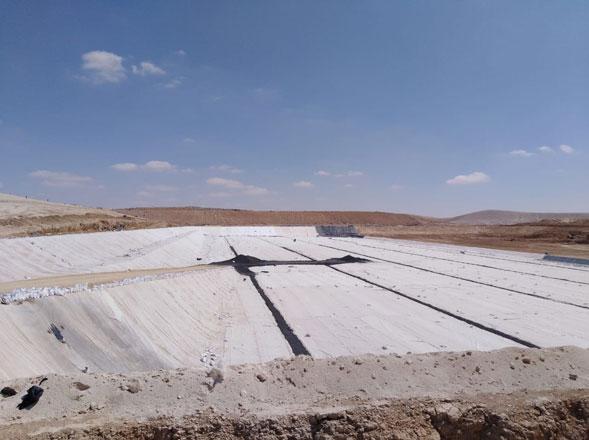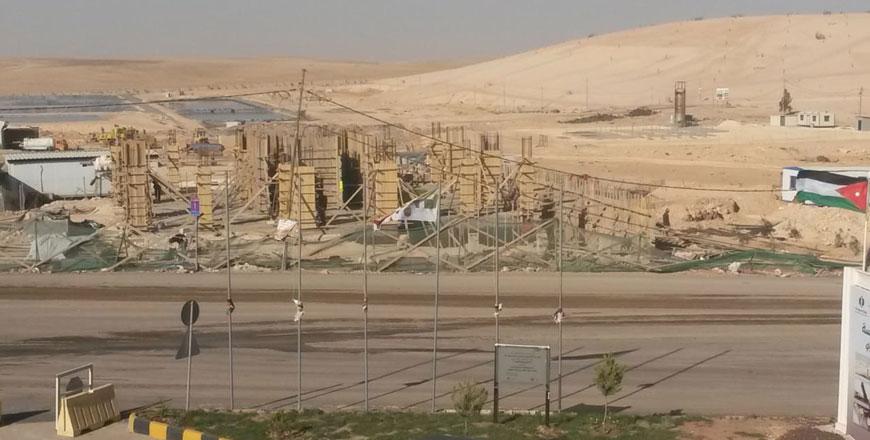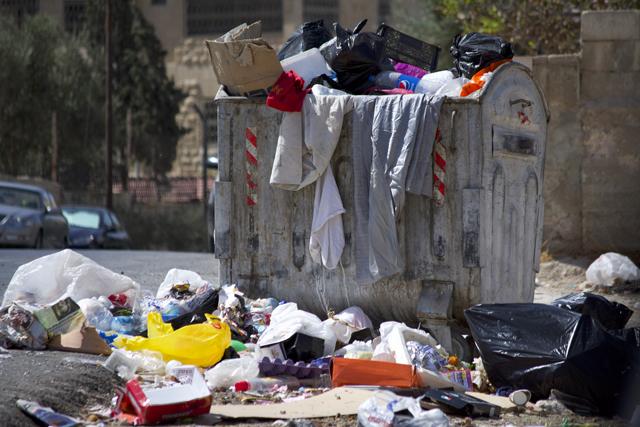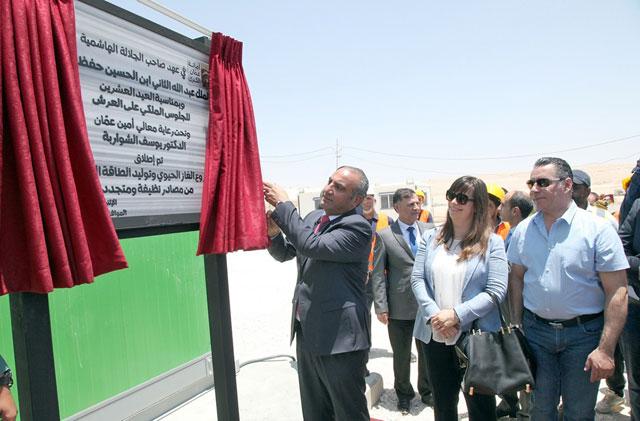You are here
GAM to receive biogas electricity-generating engines for Ghabawi landfill megaproject
By Hana Namrouqa - Apr 02,2018 - Last updated at Apr 02,2018

One of the cells under construction at the Ghabawi landfill (Photo courtesy of GAM)
AMMAN — The Greater Amman Municipality (GAM) is scheduled to receive electricity-generating engines that run on biogas later this year as it finalises preparations to produce power by burning methane from the Ghabawi landfill, a municipal official said on Monday.
The megaproject, which commenced in 2003 and is slated to be completed in 2027, will start early next year, generating five megawatts per hour by burning methane collected from waste at the Ghabawi landfill, according to Abdullah Thneibat, director of the Ghabawi landfill.
The methane gas at Ghabawi landfill, situated some 25 kilometres east of Amman, will be collected and burned to prevent it from being released into the air and harm the environment, while also using the collected biogas to generate electricity.
Thneibat said that GAM has signed a contract with a Greek company earlier this year, under which the electricity-generating engines that run on biogas will be procured later this year.
The project entails nine cells, he continued, highlighting that work on the project will conclude when all the cells are completed by 2027.
Work on the fourth cell, with a capacity of 1.7 million tonnes of waste, is almost finished, according to GAM, which said that the designs and preparations for the fifth cell, undergoing in parallel, are almost complete.
According to GAM, construction on the fifth cell, which is expected to hold 5 million tonnes of waste, will be divided into two phases at a cost of JD6.183 million.
GAM has already installed generators and integrated systems for generating electricity by burning methane and drilling wells that will collect methane emitted from municipal waste dumped at the Ghabawi landfill. The daily waste at the landfill stands at an average of 4,300 tonnes.
"The amount of methane gas produced at the landfill and ultimately burned for power generation depends on the amount of dumped municipal waste," Thneibat told The Jordan Times, underlining that the landfill has the capacity to produce more than 5 megawatts per hour.
Methane gas produced at landfills is a strong contributor to global climate change, according to GAM, which indicated that it has 21 times the negative impact of carbon dioxide on the atmosphere.
The electricity generated will be used to power the landfill, while the remainder will be sent back to the national grid, according to GAM, which said that its annual electricity bill reaches JD11 million.
The landfill serves the capital and the central region, stretching over 3,000 square metres. It receives 1.3 million tonnes of waste annually and is expected to remain in operation beyond the year 2030, according to GAM.
Related Articles
AMMAN — The Greater Amman Municipality (GAM) is planning to install a second “state-of-the-art weighbridge” in the Ghabawi landfill to cope
AMMAN — The Greater Amman Municipality (GAM) will soon start implementing the third phase of a project to generate electricity by burning me
AMMAN — The Greater Amman Municipality (GAM) on Monday launched a bio-gas electricity-generating project at the Ghabawi landfill in celebrat



















